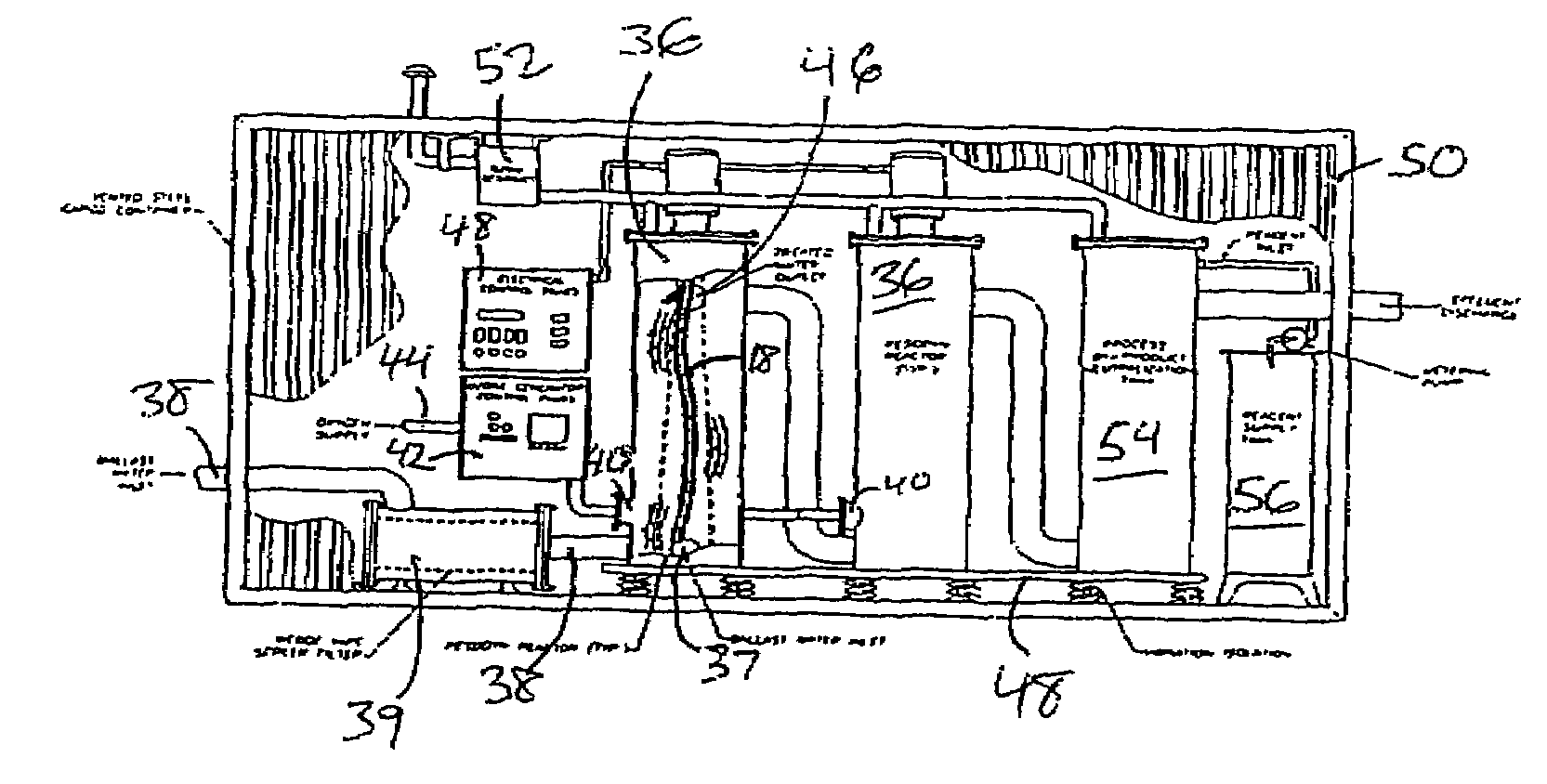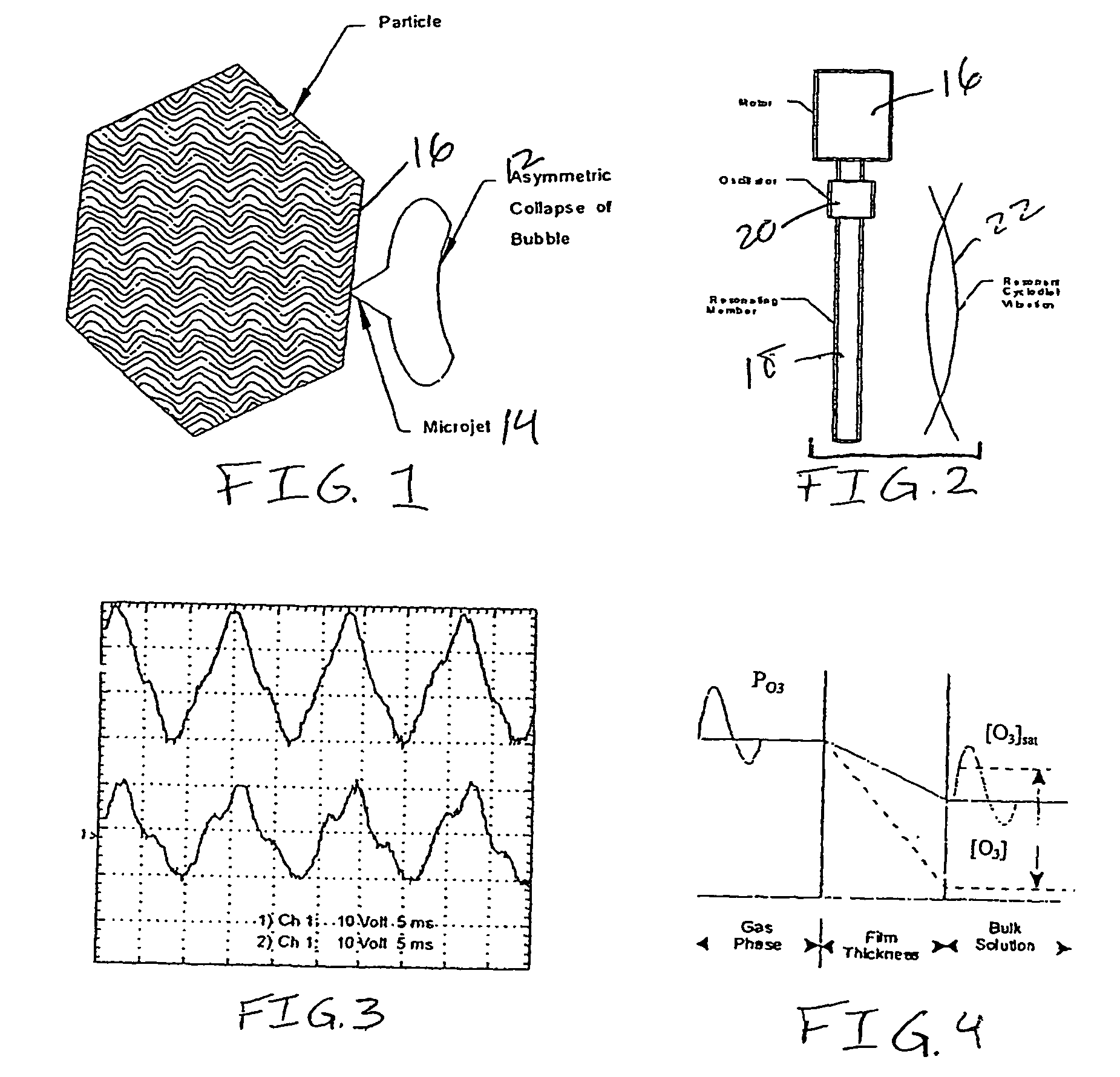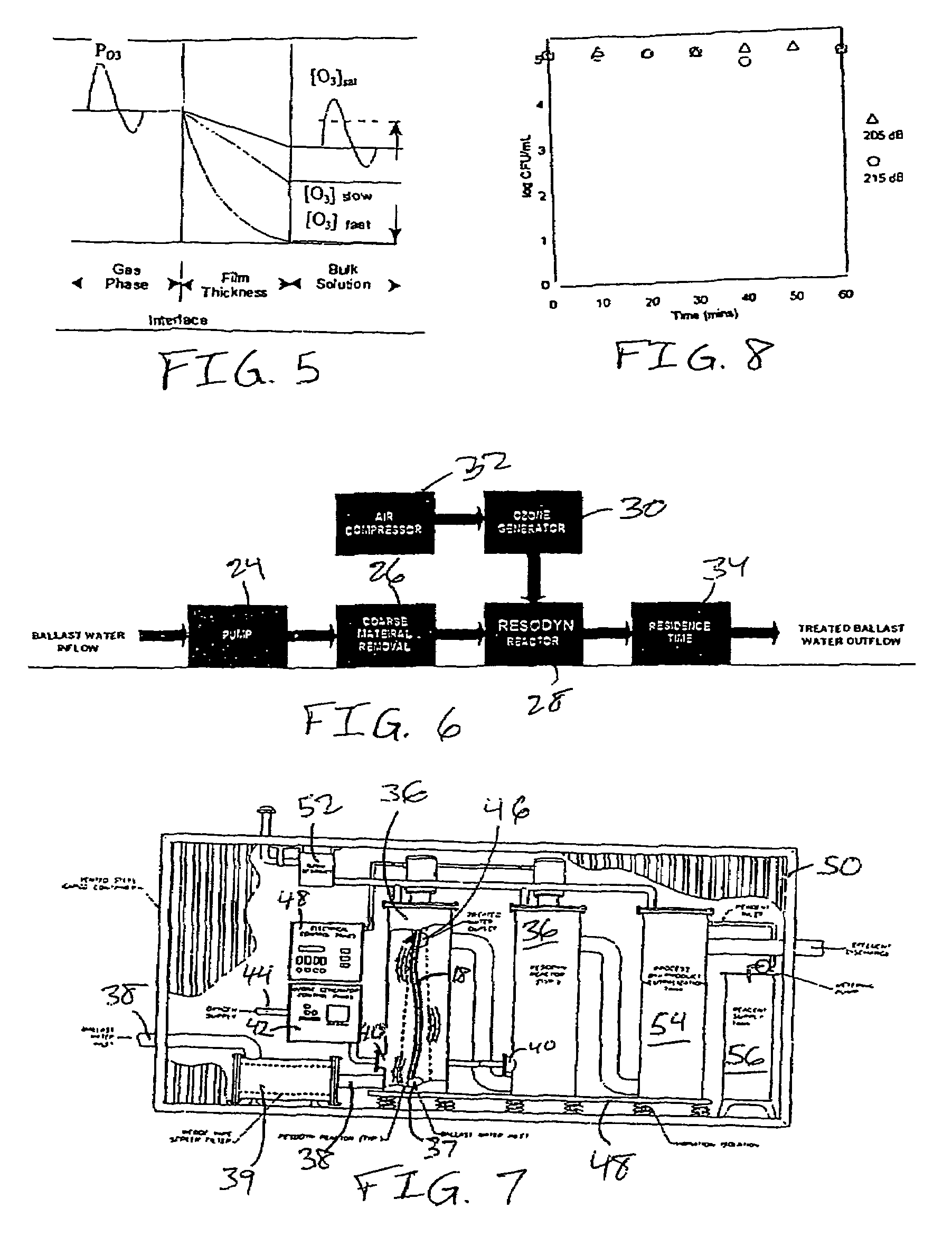On-board water treatment and management process and apparatus
a technology of water treatment and management process, applied in the direction of chemical process, mechanical vibration separation, water treatment, etc., can solve the problems of affecting the killing efficiency, affecting the ozone rating of ballast operations, and the radiation-induced mutation of surviving organisms, so as to reduce the amount of material to be treated, improve the ozone utilization rate, and the effect of effective killing technology
- Summary
- Abstract
- Description
- Claims
- Application Information
AI Technical Summary
Benefits of technology
Problems solved by technology
Method used
Image
Examples
Embodiment Construction
[0038]The technology is based on generating acoustic vibrations in process fluids to perform useful work such as mixing and interphasal mass transport. The acoustic frequency can be low or high, though frequencies in the audible range can produce excessive noise and resultant discomfort for those on board the ship. Frequencies at the lower end of the ultrasonic range (e.g., between 16 and 20 kHz) can be highly effective; and the use of dual frequencies (the simultaneous application of two frequencies) can further improve effectiveness. When the resultant vibrations agitate a fluid under conditions such that the fluid can absorb the vibrational energy, phenomena occur that enhance mixing and mass transport.
Description of Sonic Technology:
Approach:
[0039]The fundamental processes that the sonic technology of all frequency regimes exploit are cavitation and acoustic streaming.
[0040]Tensile forces can be imposed in a liquid via the transmission of acoustic rarefaction waves, w...
PUM
| Property | Measurement | Unit |
|---|---|---|
| frequencies | aaaaa | aaaaa |
| frequencies | aaaaa | aaaaa |
| frequencies | aaaaa | aaaaa |
Abstract
Description
Claims
Application Information
 Login to View More
Login to View More - R&D
- Intellectual Property
- Life Sciences
- Materials
- Tech Scout
- Unparalleled Data Quality
- Higher Quality Content
- 60% Fewer Hallucinations
Browse by: Latest US Patents, China's latest patents, Technical Efficacy Thesaurus, Application Domain, Technology Topic, Popular Technical Reports.
© 2025 PatSnap. All rights reserved.Legal|Privacy policy|Modern Slavery Act Transparency Statement|Sitemap|About US| Contact US: help@patsnap.com



